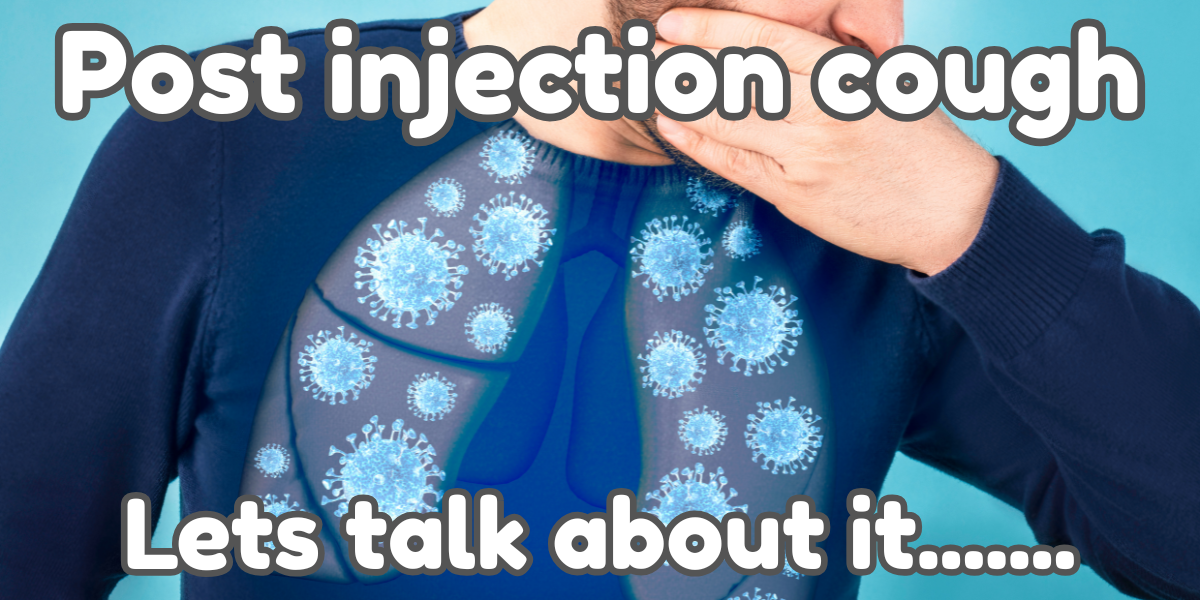Post-injection cough: The exact reasons behind it are right here. Backed by clinical studies. It’s important to note that this can occur with any oil-based injection, including trenbolone and testosterone.
The phenomenon known as POME, or Pulmonary Oil Microembolism, is often mistakenly referred to as Tren cough. Trenbolone is known to increase prostaglandin production, which can lead to this condition. For a detailed explanation of Tren vs other oils, refer to point #1 below.
Tren cough, or injection cough, is a common occurrence among users of performance-enhancing drugs. While some may dismiss it as a minor inconvenience, clinical studies support the reasons behind this phenomenon.
Many users have questions and concerns about the Tren cough, but few have a clear understanding of what causes it. Today, we will delve into the science behind this reaction in the body and the respiratory system post-injection.
It is essential to note that there is considerable misinformation surrounding Tren cough, and it is crucial to have a clear understanding of its mechanisms. For those who have experienced coughing and difficulty breathing post-injection, whether from Trenbolone or other substances, this information will serve as a refresher on the topic.
Alright, so why does this phenomenon occur, and what are the causes? Can it be prevented altogether?
Well, there are a few factors at play when it comes to the immediate post-injection symptoms that some people experience. These can range from difficulty breathing to coughing fits, watery eyes, flushing of the face, dizziness, chest pressure, and more.
Here’s the scary part – these symptoms, often referred to as post-injection cough, can last anywhere from 1-5 minutes, and in some cases, even 5-10 minutes. In rare instances, there have been reports of post-injection cough and related symptoms lasting up to 24-48 hours with sporadic coughing fits.
I often hear conflicting opinions on whether it’s the acetate ester alone or potent trenbolone that causes these reactions. Some even claim that bunk trenbolone won’t have this effect. However, the truth is that post-injection cough can occur with any compound, regardless of the ester or parent hormone.
So, while there may be some truth to these theories, the reality is that anyone can experience these post-injection reactions. It’s a wild world out there in the realm of performance-enhancing drugs, folks. Stay safe and inject responsibly.
What is the true root cause of this issue?
Previously, I mentioned that numerous factors could lead to experiencing this phenomenon. Let’s start with the most common one, known as POME.
So, what exactly is POME?
Pulmonary Oil Microembolism, or POME for short, is simply a case of acute respiratory distress or hypoxemia that occurs following the accidental intravenous injection of an oil steroid solution. This oily solution travels through the bloodstream and makes its way to the lungs, triggering a reaction of coughing as the body attempts to clear it out. This process can be quite intense and uncomfortable.
I personally experienced this issue with Test, but it can happen with any injection. Benzyl Benzoate/Benzyl alcohol is a common ingredient found in most products, especially UGLs, and is known to cause respiratory distress in many users. This can lead to a temporary acute onset of “Anaphylaxis.”
Is there a way to prevent this from happening?
Yes, to some extent. Injection sites can vary in immune response, with some areas having a dense network of veins and vessels.
When it comes to the vessels involved, there are two main types: Pulmonary vessels, which transport oxygen-poor blood from the heart’s right ventricle to the lungs, and systemic vessels, which carry oxygen-rich blood from the heart’s left ventricle to tissues throughout the body.
Now, let’s address the burning question:
Why does this issue seem to occur most frequently with Trenbolone?
The answer lies in the fact that Trenbolone increases the production of prostaglandins, which can greatly influence bronchial constriction. Stay tuned for more insights on this topic.
Prostaglandins are a group of hormone-like lipid compounds that are derived enzymatically from fatty acids. They serve as precursors of Cyclooxygenase and Lipoxygenase.
Lipoxygenase plays a crucial role in pathways expressed through branches of the bronchi in the respiratory system. An increase in Cox-2 lipo levels can lead to restriction or expulsion in the respiratory region, ultimately causing the phenomenon known as Tren cough.
This occurrence is more common with the Ace ester due to its faster metabolization and rapid rise in prostaglandin levels.
Below are some studies that may provide a more detailed explanation for those who are interested in delving deeper into the topic.
What are the symptoms of pulmonary oil microembolism?
Serious pulmonary oil microembolism (POME) reactions, which can include coughing, shortness of breath, excessive sweating, throat constriction, chest pain, dizziness, and fainting, have been reported to occur during or immediately after the injection of intramuscular testosterone undecanoate 1000 mg (4 mL) in post-approval use outside of clinical trials.
Why does my testosterone shot make me cough?
Testosterone esters are typically administered in an oil-based vehicle via the intramuscular route. In rare cases, individuals may experience a dry cough along with feelings of lightheadedness, sweating, anxiety, and fainting due to pulmonary oil microembolism (POME). These events are usually short-lived, lasting only a few minutes, and may require oxygen therapy in very rare instances.
How long does pulmonary oil microembolism last?
Reports suggest that POME is an event that typically resolves on its own within 30 minutes of the onset of symptoms. In most cases, symptoms dissipate within seconds.

